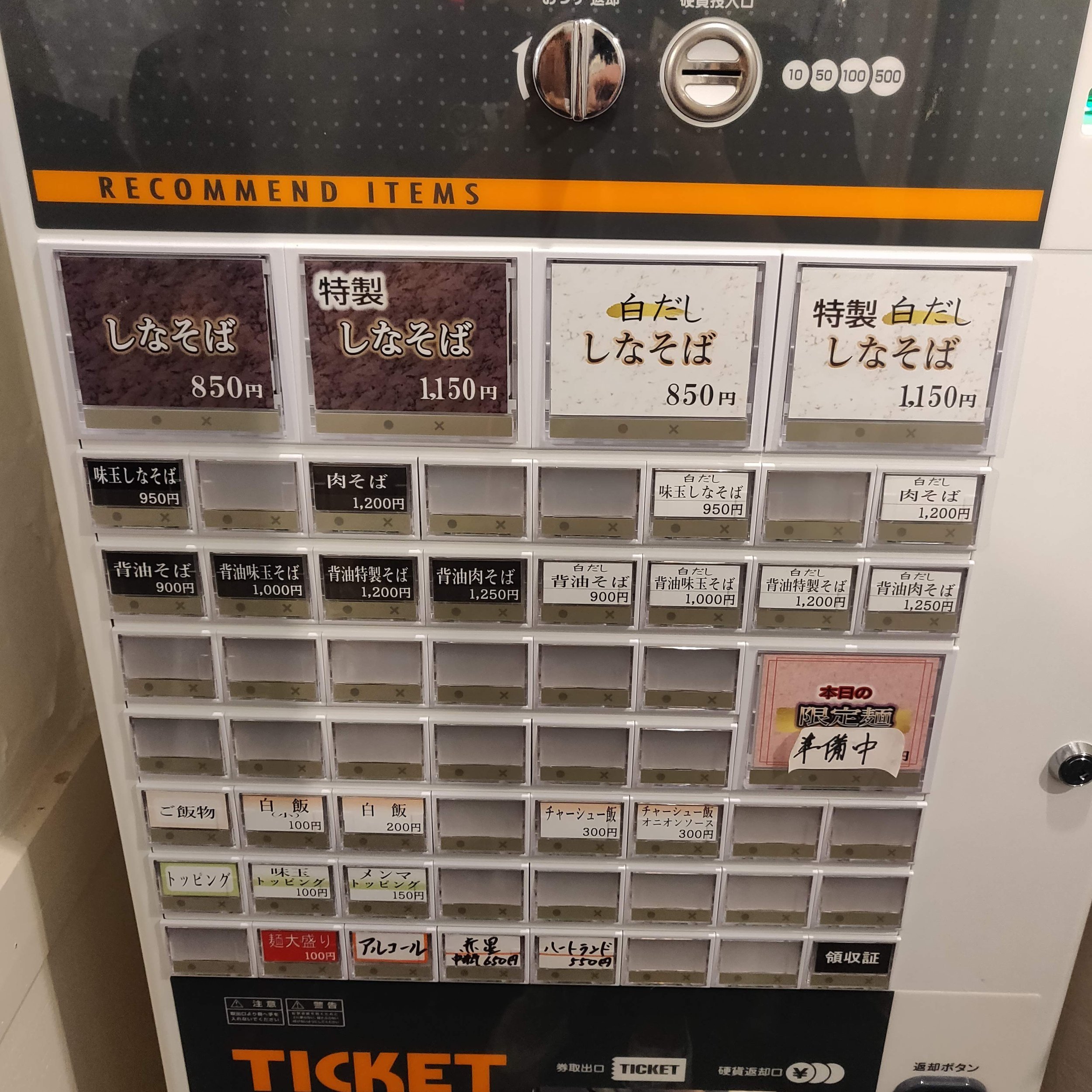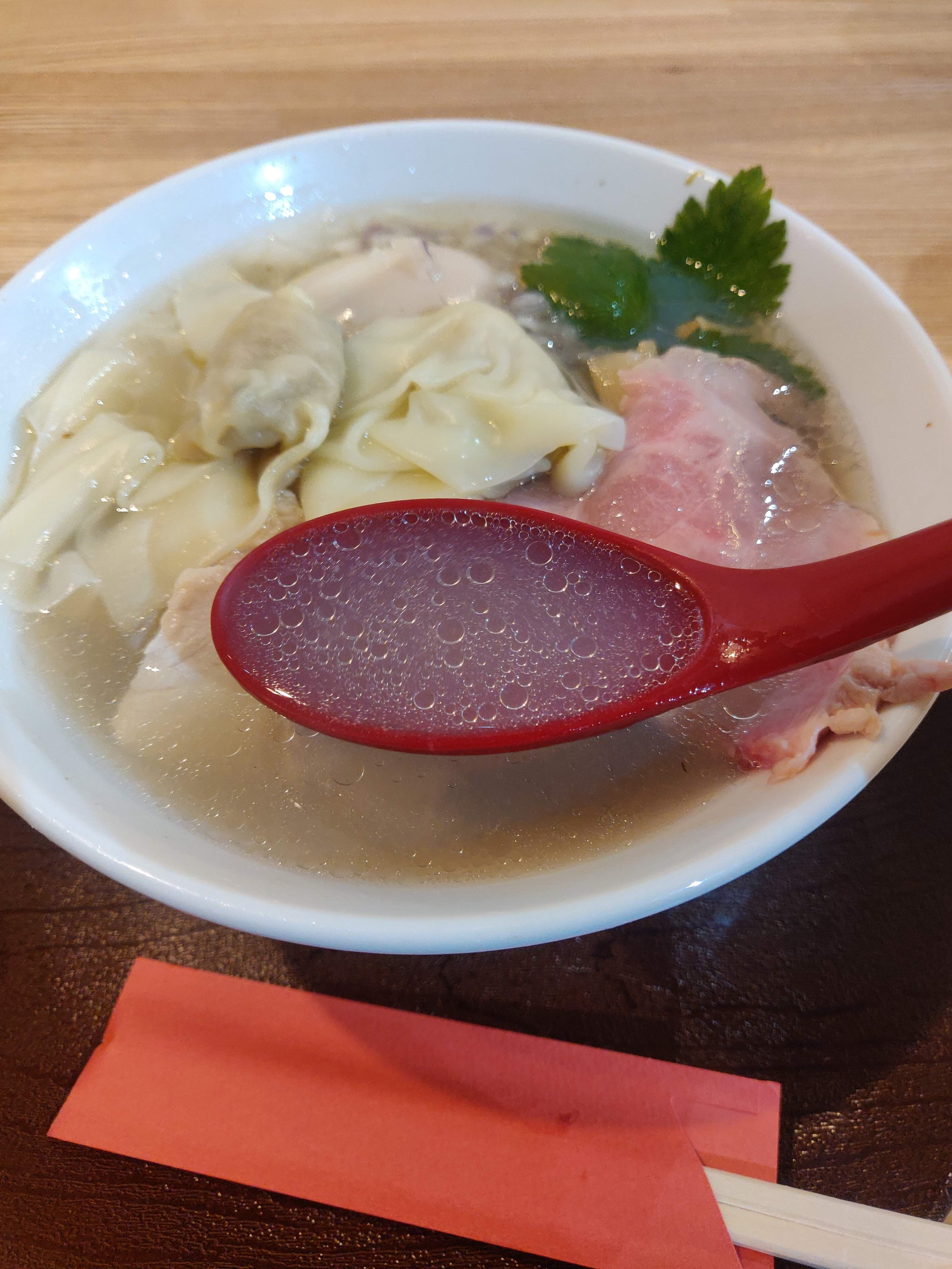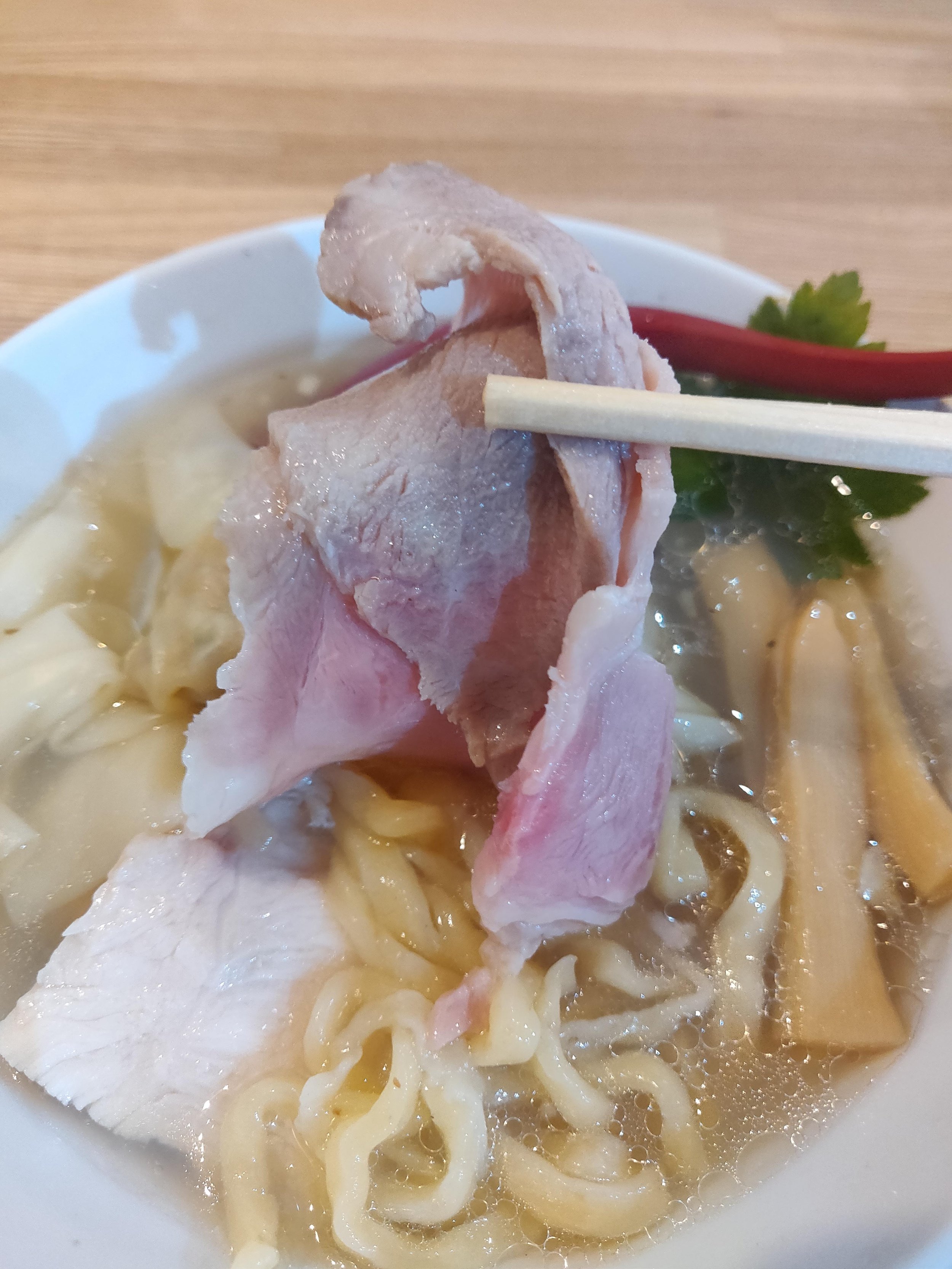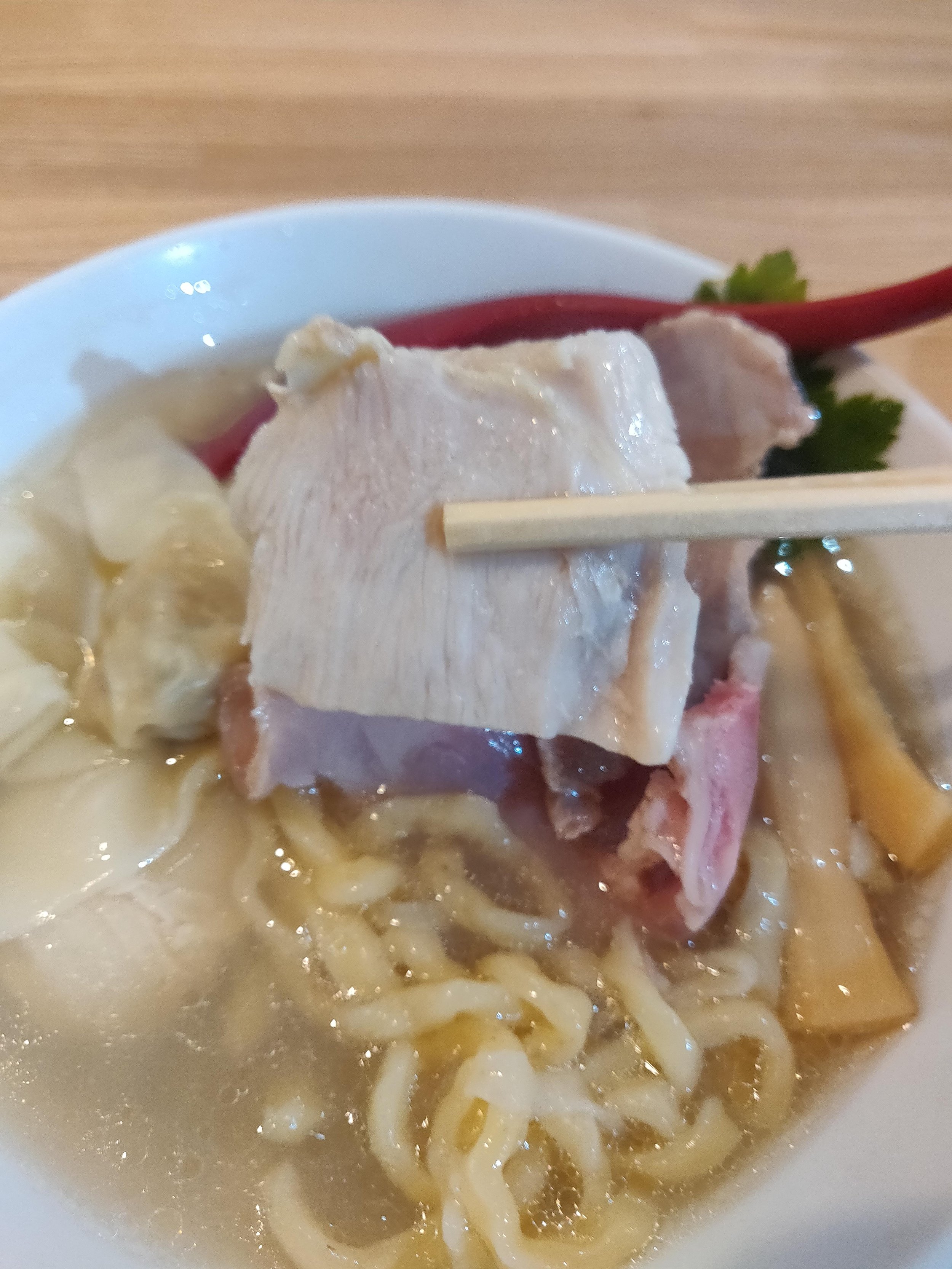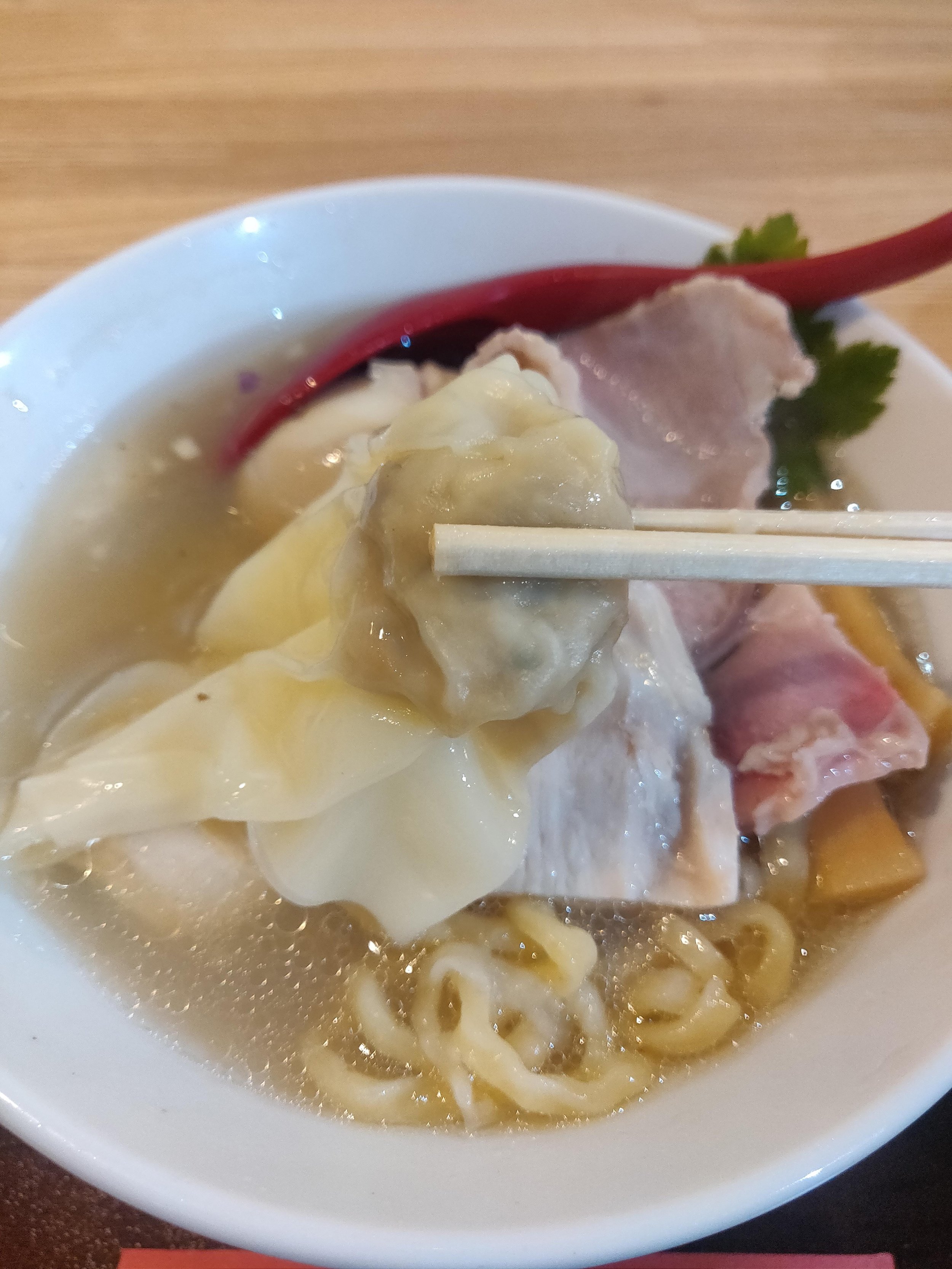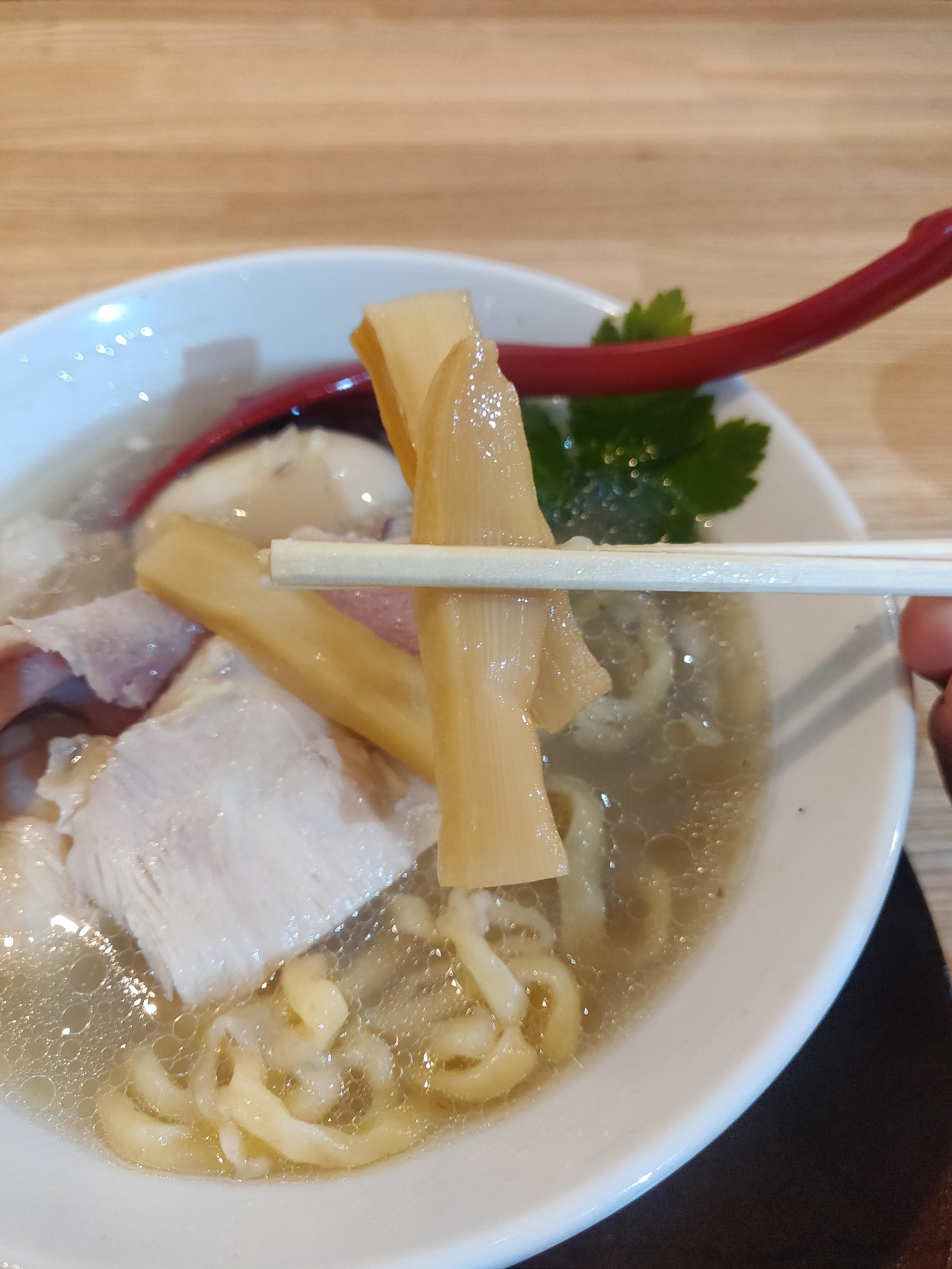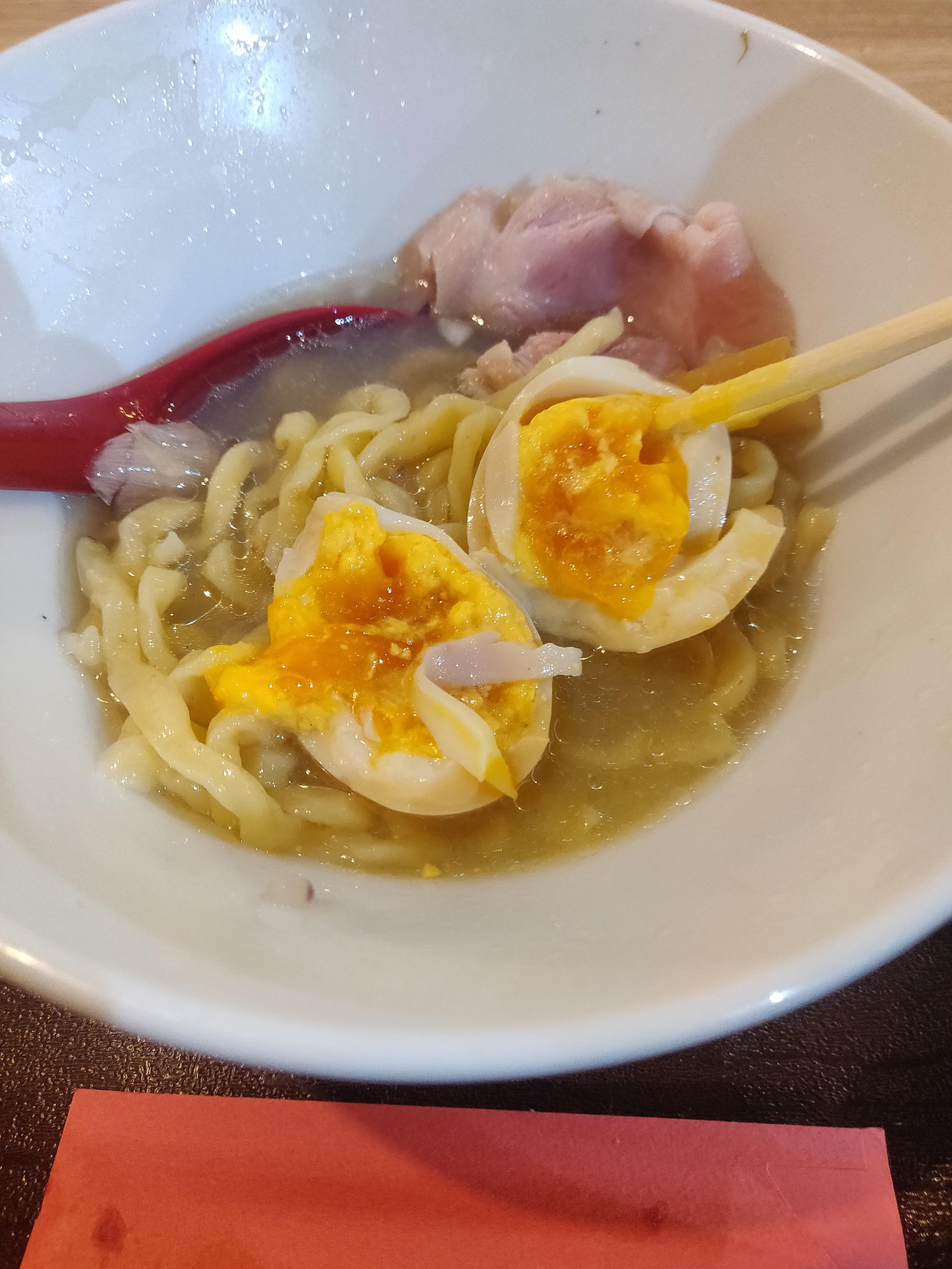Teuchi Seimen Hachimitsu(手打ち正麺Hachimitsu): The Salaryman's Ramen; Gotanda, Tokyo
In an area known primarily for business offices and salarymen, a new ramen shop opened bringing forth house made noodles to the white collar working masses of Gotanda. I happen to be one of those white collar folks and decided to hop on the train and grab a bowl during my very valuable lunch breaks. I came about 15 minutes before opening and was met with the pictured line. Thankfully the staircase was quite short and there was only about five people ahead of me, easily placing me in the first lot of customers. Before you take a seat, be sure to make your order via the ticket machine at the entrance. Shop has a long counter seating about six as well as two small tables so great to visit both solo or with a friend. Turnover is decent so even with a line out the door like you see here, shouldn’t be too bad of a wait.
As always, the ticket machine is only in Japanese so I’ll go ahead and translate it here. So simple enough, the black buttons are the kuro or black shoyu version while the white is the white dashi version. Two biggest buttons are regular ramen on the left and the Tokusei with all the extra toppings on the right. Second row is with Ajitama soft boiled egg on the left and extra pork chashu version on the right. Third row is a Seabura pork back fat ramen, Seabura with Ajitama soft boiled egg, Tokusei with extra toppings, and Niku with extra chashu. Third from the bottom is small and regular rice, chashu over rice, and chashu over rice with a rendered onions sauce. Row below that is extra topping of Ajitama egg and menma bamboo shoots. Final row has large portion noodles, Sapporo Akahoshi beer, and Heartland beer. I decided on the Tokusei version of the white, Shiro Dashi, but both ramen comes highly recommended by both Ramen DB and Tabelog.
Took about 15 minutes for them to prepare my bowl as there were a good number of diners that sat before me, but it was definitely worth the wait. Presentation here is impeccable and for a new shop like this, it makes a world of difference as even I was drawn to the shop after seeing photos of their beautiful bowls on Instagram. Broth is pulled from scallops and asari clams and despite sharing the same Shina Soba moniker with the shoyu, is actually completely different in preparation. From there, a white shoyu based tare is used to season the soup and a small ladle of aroma oil bind it all together. In terms of seafood based ramen goes, it definitely has the ingredients that put it in the same class as some of the other top tier shops, but I thought it didn’t quite hit has hard in terms of flavor and balance, lacking the sort of refinement I taste at other shops. The cloudiness of the soup made me think it would be a lot richer than it would and I would have like a bit more depth of flavors.
But then again, if you’re coming to Hachimitsu, you’re probably there to try the house made noodles and this was definitely where they excelled. Using a rather high water content dough, these hand massaged strands were a thing of beauty. I love how extra thick they were which allowed for ample curves and crevices to form during that massaging process. I felt like there was a bit of osmosis going on where it was soaking up the soup way better than I would have thought. Each bite just burst with flavor, both of the soup and the flour of which its made. As the full shop name suggests, the dough is sheeted by hand as well as cut individually to order. Craftsmanship here is top tier and its hard to imagine I’d find such a shop in central Tokyo.
As for the toppings, I got a slice of pork chashu cooked sous vide, chicken, wontons, menma, ajitama soft boiled egg, red onions, and mitsuba. I wouldn’t say any one thing stood out, but I quite enjoyed the herbaceous notes of the Mitsuba with the seafood based broth. I would have thought the wontons would be a bit better given their noodles are so amazing, but I wasn’t a huge fan of how thick they made their skins. Chashu though was quite good and the light marinade on the ajitama egg was also a nice touch.
Thick house made, hand massaged noodles like this is a craft within ramen and due to how time consuming it is, finding a good one is a dime a dozen. Finding one in central Tokyo, at a huge station like Gotanda no less is even more rare so if you’re a tourist staying in the Meguro/Shinagawa area or you frequently work around the area like I do, this is a fantastic lunch time spot to visit.

